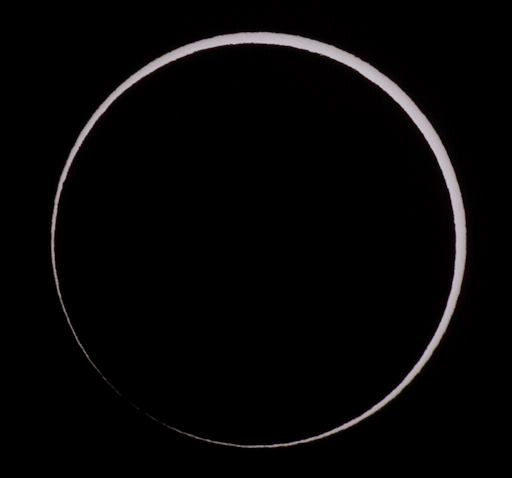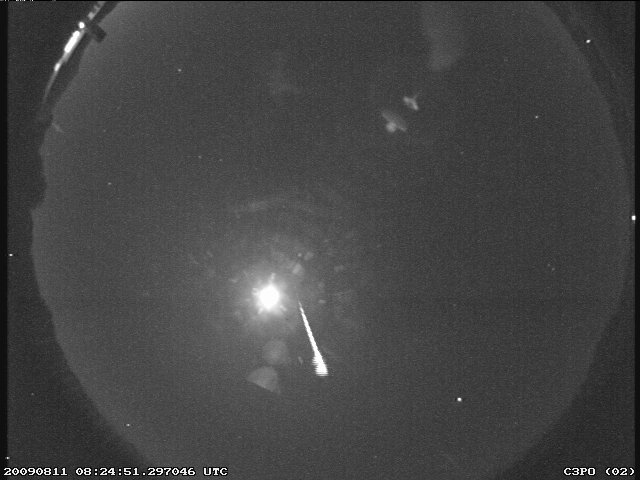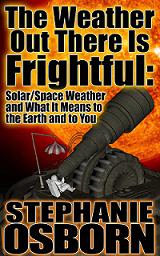by Stephanie Osborn
http://www.stephanie-osborn.com
FYI, there's a lot of hullaballoo about the Perseid meteor shower this year. Here's a little tidbit to explain why.
http://www.sciencealert.com/guys-the-perseid-meteor-shower-is-here-and-it-s-going-to-be-twice-as-good-this-year
Meteor showers are actually the debris left behind by comets. The tails blown off by the Sun form tiny particles in the swath of the parent comet's orbit, and when the Earth passes through it, the debris we run into flashes through the atmosphere and burns up, producing meteors. Most of these bits are the size of dust and sand; occasionally one is pebble-sized, which will be very bright.
This is why meteor showers are so predictable: we encounter the same orbital path each year, and go through the thickest part on the same day. If the parent comet has been through recently, there is a fresh, dense deposit of debris, and the shower will be especially good.
The radiant of this shower is the constellation Perseus; that is to say, all the meteors of the shower appear to be emerging from Perseus, radiating out and away from it. But the meteors have nothing to do with Perseus. Instead, we are seeing a kind of optical illusion. Imagine that you are in a car at night, headlights on, driving through a snowstorm. As the snowflakes enter the headlights and you move through them, they appear to radiate from a point in front of the car, seeming to move out from that point and around the car. This is the same effect; it is produced by the Earth moving through the meteoric debris.
So it will be easier to see the meteors if we are metaphorically on the hood of our planet-car than on the trunk! So it is better to observe meteor showers after midnight, because we are now on the forward-facing side in our orbit. The best observing times are from around 2 or 3am until near dawn.
Facing the radiant is not the best way to see lots of meteors, because the trails will be short: the meteors are moving right at you, and the trails will be short and quick. If you look away from it, the meteors are passing by you, and they will have long trails and last longer. So the best way to look is to turn, so your shoulder is pointing at the radiant, or even put your back to it and watch one large region of sky. Then you will see meteors entering the atmosphere at shallower angles, and they will have longer tracks, with more chance to spot them.
FWIW, meteor showers are not hard-edged things. Yes, the shower will have already started, but it is early stages yet, and they won't be very frequent. Your best bet for seeing meteors is a few days either side of the peak, which will occur the night of August 11/12. Also you want to go out AFTER MIDNIGHT. This is because you will now be on the forward-facing hemisphere relative to our orbit.
Wear comfortable clothes, and even in summertime, make sure you have a jacket; it can get rather cool in the wee small hours of the night. You'll be there for a while, so think about a chair, a blanket on the ground, or the like. My preference is for a chaise lounge, because it holds me in a comfortable position for watching the sky. A lap throw or similar blanket might be nice, too, depending on the weather where you are. (If you're in the Southern Hemisphere, it'll be
de rigueur. It IS winter down there, after all, Summer Olympics in Rio notwithstanding.)
DO NOT FACE the radiant; this almost guarantees you'll see little to nothing. That's because you're looking right into the direction we're going, so meteor tracks will appear short and swift.
On the night of the peak (and for several days fore and aft), Perseus will be in the northeast. Turn so that your shoulder, or even your back, faces northeast, and survey a large area of the sky looking any direction BUT northeast, and give yourself at least an hour to observe. You should see some nice meteors in that time, especially this year.
Now, according to predictions, the Perseids MAY double their normal rate. But I never say an astronomical event like this ABSOLUTELY WILL do a thing. Because there are no guarantees. Yes, Jupiter may tweak the orbit of the debris so we do plow through the center of it -- but the part we plow through might just be unusually sparse, so it makes no difference.
FYI, I have never heard of the meteors from showers making impact. This is because they are the debris left behind from comets, "dirty snowballs" whose ice has sublimated via solar radiation. All that's left is particulates ranging largely from dust up to grains of sand. Rarely you get something pebble-sized. It all burns up in the upper reaches of the atmosphere, and nothing much gets lower than around 60mi. (Regular meteors can get as low as 50mi. Some get as low as 40. It depends on the speed of the meteor. Perseids usually are gone by a 60mi. altitude.)
SOLAR UPDATE: Sometime between Thursday and Friday, a couple of new sunspot groups formed on the solar near side, 2571 and 2572. They began rather unimpressively, but are now rather reasonable sunspot groups. However, the more active of the two groups, 2572, will be rotating off the west edge to the far side in the next couple of days.
It's a little hard to determine what's going on with the solar far side right now; one of the twin STEREO spacecraft, STEREO Behind, has experienced a "transient hit" -- meaning that the electronics likely took a charged particle hit. Instrument recovery is in work now. The STEREO Ahead craft appears to indicate 2-3 large spot groups may be about to rotate to the near side.

The outflow from a large, oblong coronal hole has enhanced the solar wind in the last few days, resulting in an unsettled geomagnetic field. Another one will swing around into a 'geoeffective' (Earth-directed) position in a few more days, possibly producing more minor geomag storming. I'll post if it does.
ADDENDUM:
Just a quick promo for me and my fellow scientists, for those of you who are interested in such things: A new anthology will be released in September (we hope!) called
Science Fiction By Scientists. Every short story in it is "hard SF" written by an actual scientist, along with a quick primer at the end of each story on the science involved. It's available for
preorder now!
~Stephanie Osborn
http://www.stephanie-osborn.com
 For those interested in a smidge more information, may I recommend The Weather Out There Is Frightful: Solar/Space Weather and What It Means for the Earth and You, available for Kindle.
For those interested in a smidge more information, may I recommend The Weather Out There Is Frightful: Solar/Space Weather and What It Means for the Earth and You, available for Kindle.

 My very first novel, Burnout: The mystery of Space Shuttle STS-281, which eerily predicted the Columbia disaster (being written, though not published, before that disaster), is also on sale in ebook formats for $0.99.
My very first novel, Burnout: The mystery of Space Shuttle STS-281, which eerily predicted the Columbia disaster (being written, though not published, before that disaster), is also on sale in ebook formats for $0.99.
































